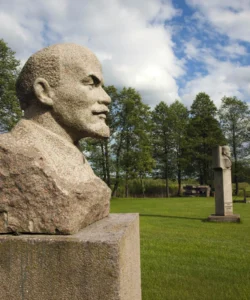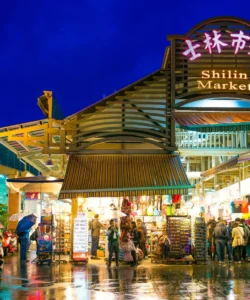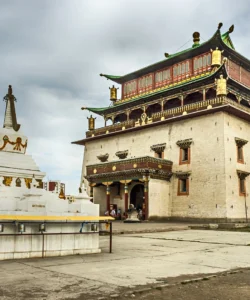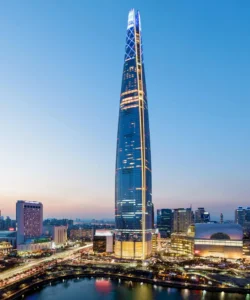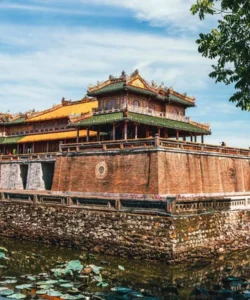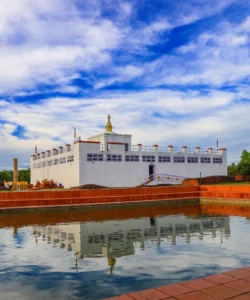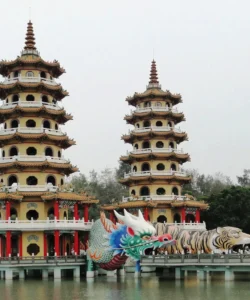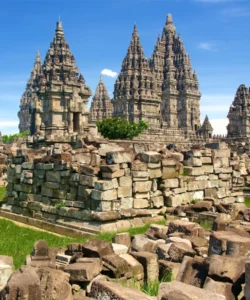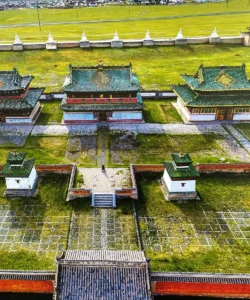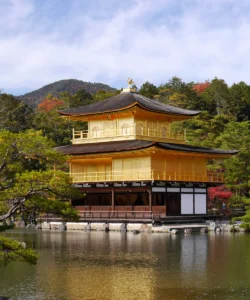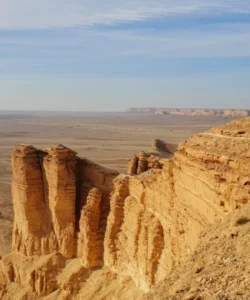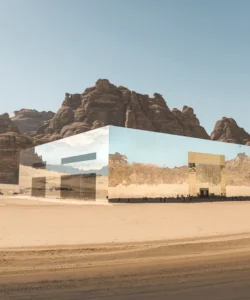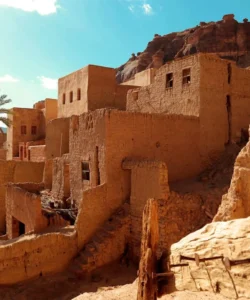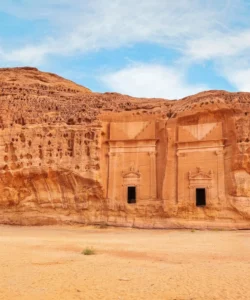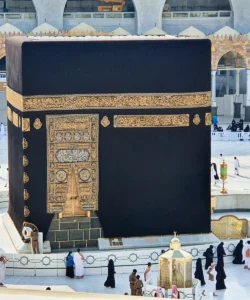Tashichho Dzong, officially known as “The Fortress of the Glorious Religion,” is a majestic and imposing fortress-monastery located in Thimphu, the capital city of Bhutan. It serves as the spiritual and administrative heart of the kingdom, beautifully embodying Bhutan’s unique blend of tradition, governance, and Buddhist faith.
Name: Tashichho Dzong (Dzongkha: བཀྲ་ཤིས་ཆོས་རྫོང་; also Trashichhoedzong or Thimphu Dzong)
Address: Dzong Lam, Thimphu, Bhutan. It is strategically situated on the western bank of the Wang Chhu (Wang River), at the northern end of Thimphu Valley.
How to Get There:
All foreign visitors (except those from India, Bangladesh, and the Maldives) must arrange their travel to Bhutan through a licensed Bhutanese tour operator, which includes all transportation.
- By Air to Paro (PBH): International travelers typically fly into Paro International Airport (PBH), Bhutan’s only international airport.
- From Paro to Thimphu: Thimphu is about 50-60 kilometers (31-37 miles) from Paro and takes approximately 1.5 to 2 hours by car. The drive is scenic, following the Paro Chhu and Wang Chhu rivers.
- Within Thimphu: Tashichho Dzong is easily accessible from any part of Thimphu city.
- By Car/Taxi: Your tour operator will arrange transport. Taxis are also readily available in Thimphu.
- By Foot: From central Thimphu, it’s about a 2-3 kilometer walk along the river, which can be pleasant.
- Entrance Fee: There is an entrance fee for Tashichho Dzong.
- Dress Code: As a sacred site and government building, strict modest dress is required (shoulders and knees covered, long trousers/skirts for both men and women). Foreign visitors are sometimes asked to wear a “gho” (for men) or “kira” (for women) for entry, or a full-sleeved shirt is often sufficient. Footwear must be removed in certain areas, particularly inside temples.
- Best Time to Visit: The best time is during the spring (March to May) and autumn (September to November) seasons, when the weather is generally clear and pleasant.
- Timing is crucial: The dzong serves as the summer residence of the Central Monastic Body and the civilian government. It is generally open to tourists only after government office hours (typically after 5 PM on weekdays), and on weekends/public holidays. This ensures no disruption to official functions. It’s recommended to arrive around 5:00 PM for the flag-lowering ceremony.
Landscape and Architecture:
Tashichho Dzong is a magnificent example of traditional Bhutanese dzong architecture, characterized by its imposing scale, whitewashed walls, and intricate woodwork, all set against a beautiful mountain backdrop.
- Riverside Location: The dzong is strategically located on the western bank of the Wang Chhu (Wang River), contributing to its scenic setting, though it’s built on a slightly elevated piece of land rather than directly at a confluence like Punakha Dzong.
- Massive Whitewashed Walls: The dzong is defined by its enormous, inward-sloping whitewashed walls, constructed of stone and rammed earth. These walls are several meters thick at the base and give the impression of a formidable fortress.
- Traditional Bhutanese Design: It embodies classic Bhutanese architecture, featuring:
- Wooden Trusses and Pillars: Intricately carved, painted, and un-nailed wooden trusses support the traditional roofs.
- Gold Roofs and Pinnacle: The multi-tiered roofs of the main temples and the central tower are often adorned with gold, and the main utse (central tower) is topped with a prominent golden pinnacle.
- Elaborate Paintings: The interior walls are richly decorated with vibrant Buddhist murals and frescoes depicting deities, mandalas, and mythological scenes.
- No Nails in Construction: Like other traditional Bhutanese structures, Tashichho Dzong was constructed without the use of iron nails, relying entirely on intricate traditional joinery techniques, a testament to ancient craftsmanship.
- Dual Function Design: The dzong is divided into two main parts, symbolizing its dual function:
- Northern Section: Houses the National Assembly of Bhutan (Parliament House, though it now has a separate building nearby), the King’s Throne Room, government ministries (Home Affairs, Finance, etc.), and the Secretariat.
- Southern Section: Occupied by the Central Monastic Body (Je Khenpo’s summer residence) and numerous temples and monastic cells.
- Central Utse (Tower): A tall, central Utse or tower, often topped with a golden roof, rises from the monastic courtyard, housing sacred relics and important ritual spaces.
- Manicured Gardens and Lawns: The dzong is surrounded by beautifully maintained lawns and gardens, with vibrant flowers and neatly trimmed bushes, providing a serene foreground to the massive structure.
- Flagpole and Flag-Lowering Ceremony: A prominent flagpole stands before the main entrance, and a daily flag-lowering ceremony (at the close of government offices) is a popular public event.
What Makes It Famous:
- Seat of Government and Monarchy: Tashichho Dzong is the central administrative and spiritual heart of Bhutan. It houses the King’s Throne Room, the Secretariat, various government ministries, and is the summer residence of the Chief Abbot (Je Khenpo) and the Central Monastic Body. This dual function (civilian and monastic) is fundamental to Bhutan’s unique governance model.
- Iconic Symbol of Thimphu: It is the most prominent and recognizable landmark in Thimphu, dominating the northern end of the valley and symbolizing Bhutanese identity and sovereignty.
- Magnificent Bhutanese Architecture: It is a superb example of traditional Bhutanese dzong architecture, showcasing impressive scale, intricate woodwork, and a harmonious blend of fort and monastery.
- Historical Significance: While rebuilt after a fire and extensively renovated in the 1960s, its history dates back to the 13th century. It has witnessed numerous significant events in Bhutanese history, including royal coronations and the establishment of the modern monarchy.
- Vibrant Cultural and Religious Hub: The dzong is a living, active center of Buddhist practice, hosting important annual religious festivals (like the Thimphu Tsechu) and housing numerous monks.
- Flag-Lowering Ceremony: The daily military flag-lowering ceremony at the closing of office hours is a popular public ritual, providing a glimpse into Bhutanese protocol and tradition.
Differences from Some Other Wonders (especially Punakha Dzong):
- Current Capital’s Seat of Power: While Punakha Dzong was the historical capital, Tashichho Dzong is the current seat of government and the King’s primary office in the active capital city of Thimphu. This direct connection to contemporary governance makes it a different kind of “living” landmark.
- Limited Public Access (Timing): Unlike Punakha Dzong, which has relatively open visiting hours during the day, Tashichho Dzong has very specific visiting hours for tourists, typically after government offices close (e.g., 5 PM onwards on weekdays), to avoid disrupting official work. This controlled access is a key difference.
- River Bank Location (vs. Confluence): While both are by rivers, Tashichho Dzong is built on the bank of the Wang Chhu, whereas Punakha Dzong is famously located at the confluence of two rivers, which significantly shapes its visual and defensive attributes.
- Architectural Harmony with Modernity: While maintaining traditional forms, Tashichho Dzong’s significant modern reconstructions (post-1960s) for its governmental functions have integrated contemporary needs, demonstrating a seamless blend of traditional aesthetics with modern functionality, a slightly different approach than the historical fidelity seen in Punakha.
- Focus on Governance and Monastic Body: Its dual role as the literal “headquarters” of both the civilian government and the Central Monastic Body is more pronounced in Tashichho Dzong, emphasizing its centralized power in Bhutanese society.
- No Iconic Jacaranda Blooms: While beautiful, Tashichho Dzong is not known for the specific seasonal Jacaranda tree blooms that famously adorn Punakha Dzong’s courtyards.
- Historical Symbolism and Evolution: The current dzong (rebuilt after fire and expanded) represents an evolution of Bhutanese nation-building, with its foundations dating back centuries but its current form being a modern, consolidated symbol of the united kingdom.
Tashichho Dzong Photos:



















